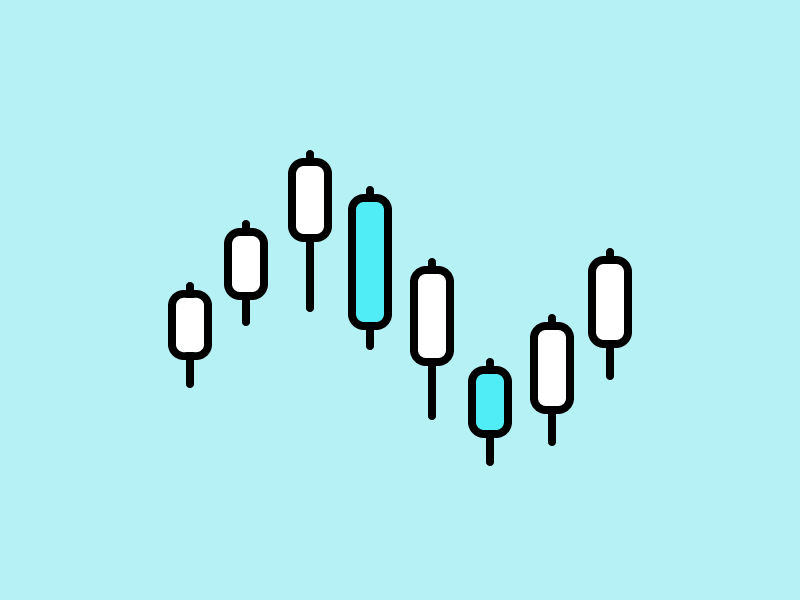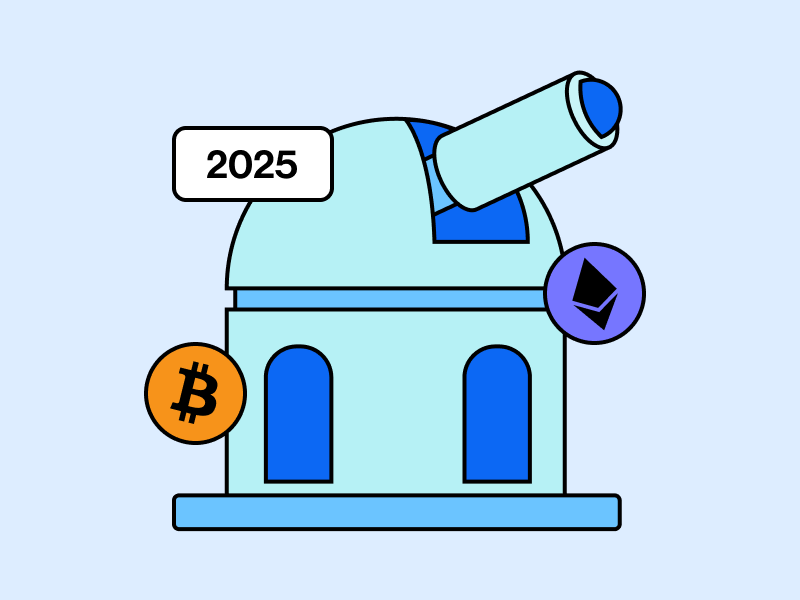Market Analysis Feb 10th, 2025: Bitcoin Holds Below $100K, with Growing Signs of Accumulation

The cryptocurrency market remained highly volatile in early February, impacted by U.S. presidential trade policies imposed on several countries. This issue raised concerns among cryptocurrency investors. However, according to several data points, institutional accumulation and demand continued to rise despite the downward price pressure. Read the full analysis by the Pintu Trader Team.
Market Analysis Summary
- 📝 BTC Holds Below $100,000 Amid Accumulation and Institutional Demand.
- ⬆️ Personal Consumption Expenditures (PCE) Price Index rose 0.3% in December, the largest increase since last April.
- 📈 On an annual basis, PCE inflation rose 2.6% in December, the highest in seven months, following a 2.4% increase in November.
- 🚨 The central bank now projects only two rate cuts this year, down from the four initially forecasted in September.
- 🏭 The global manufacturing sector barely entered expansion territory in January, with the Global Manufacturing PMI rising to 50.1 from 49.6 in December.
Macroeconomic Analysis
Core PCE Index
U.S. inflation saw its largest rise in eight months in December, driven by strong consumer spending on goods and services, indicating that the Fed is unlikely to rush into cutting interest rates.
Although the Commerce Department’s report on Friday showed a modest monthly increase in prices excluding the volatile food and energy sectors, the annual rise in core inflation has remained unchanged since October. Disinflation progress appeared to have stalled in the fourth quarter.
The U.S. Fed held interest rates steady on Wednesday, marking the first pause since beginning its policy easing cycle in September. The accompanying policy statement notably omitted any mention of inflation making progress toward the Fed’s 2% target. The inflation outlook remains uncertain, influenced by the economic impact of President Trump’s fiscal, trade, and immigration policies.
The Fed anticipates a slower pace of monetary easing moving forward, as the economy remains strong and inflation is only gradually returning to target amid significant uncertainty. According to the Commerce Department’s Bureau of Economic Analysis, the Personal Consumption Expenditures (PCE) Price Index rose 0.3% in December, the largest increase since last April, following an unrevised 0.1% gain in November. This increase aligned with economists’ expectations. Goods prices climbed 0.2%, marking their first gain in five months, driven by higher costs for motor vehicles, parts, gasoline, and other energy products, which surged 4.2%. However, prices for furnishings, durable household goods, recreational goods, and vehicles declined. Service costs increased 0.3%, reflecting higher prices in transportation, recreation, housing, and utilities.

On an annual basis, PCE inflation rose 2.6% in December, the highest in seven months, following a 2.4% increase in November. The data was part of the preliminary Q4 Gross Domestic Product (GDP) report released on Thursday. The Fed closely monitors PCE price measures to guide monetary policy. Since September, it has reduced its benchmark overnight interest rate by 100 basis points, bringing it to a range of 4.25%-4.50%.
The central bank now projects only two rate cuts this year, down from the four initially forecasted in September. This cautious stance stems from concerns about the new administration’s proposed tax cuts, tariffs on imports, and immigration policies, which economists warn could drive inflation higher. No rate cuts are expected before June.
Excluding food and energy, core PCE inflation increased 0.2% in December, following an unrevised 0.1% rise in November. On an annual basis, core inflation remained at 2.8% for the third consecutive month. Some economists pointed to this slight monthly increase and a separate Labor Department report showing a marginal rise in labor costs as signs that disinflation remains intact. Core inflation rose at an annualized rate of 2.2% in the last three months of 2024.

Other Economic Indicators
- Labor Costs and Consumer Spending: The Employment Cost Index (ECI), which measures labor costs comprehensively, increased 0.9% in Q4, following a 0.8% gain in Q3. Over the 12 months through December, labor costs rose 3.8%, the slowest increase since Q3 2021, down from 3.9% in the previous year. The Fed considers the ECI a key indicator of labor market conditions and a leading predictor of core inflation, as it adjusts for shifts in job composition and quality.
- S&P Global Manufacturing Index: The global manufacturing sector barely entered expansion territory in January, with the Global Manufacturing PMI rising to 50.1 from 49.6 in December. The index inched just above the 50.0 threshold, signaling a slight improvement in operating conditions—the first since last June. However, regional disparities remained significant. The U.S. saw the most notable improvements in both current and expected business conditions, while parts of Asia—particularly in terms of export growth—also contributed to the sector’s recovery.
- ISM Manufacturing Index: The Institute for Supply Management (ISM) reported that the Manufacturing PMI rose to 50.9 in January, up from 49.3 in December, surpassing market expectations of 49.8. Meanwhile, the Prices Paid Index, a key indicator of inflation, increased to 54.9 from 52.5. The Employment Index also climbed to 50.3, recovering from 45.4, while the New Orders Index saw an improvement, reaching 55.1.
- JOLTs Job Openings: The Labor Department reported on Tuesday that job openings fell in December, while hiring, voluntary quits, and layoffs remained largely unchanged. According to the Bureau of Labor Statistics’ (BLS) Job Openings and Labor Turnover Survey (JOLTS), available positions dropped to 7.6 million, the lowest level since September, and below the estimate of 8 million. This decline brought the ratio of job openings to available workers down to 1.1 to 1. Although the report lags behind other labor market data by a month, it is closely monitored by the Fed as an indicator of labor market conditions.
- S&P Global Services PMI: The January U.S. Services Purchasing Managers’ Index (PMI) from S&P Global registered at 52.9, marginally surpassing the 52.8 forecast. This marks the 24th straight month of expansion, though it is the slowest pace of growth since April.
- ISM Services PMI: Economic activity in the U.S. service sector continued to expand in January, though at a slower pace than in December, as the ISM Services PMI fell to 52.8 from 54. This reading came in below market expectations of 54.3. Additional details from the report indicated that the Prices Paid Index, a key measure of inflation, dropped to 60.4 from 64.4, while the Employment Index saw a slight increase, rising to 52.3 from 51.3.
BTC Price Analysis
BTC’s price has stabilized below $100,000, following a pullback from its recent all-time high of $109,000 reached in January 2025. Currently trading at $98,000, the leading cryptocurrency is showing signs of accumulation, as exchange reserves continue to decline.

Data highlights a persistent downtrend in Bitcoin exchange reserves, indicating that investors are moving their holdings off trading platforms. This behavior is often associated with long-term holding strategies, reducing the available supply for trading.
The Trump administration has signaled crypto-friendly policies, including potential regulatory adjustments and the formation of a dedicated cryptocurrency task force. These factors have contributed to positive market sentiment, despite the current price consolidation.
The Coinbase Premium Index, which tracks Bitcoin’s price difference between Coinbase and other exchanges, has recently broken above the ‘0’ resistance level. This metric is closely monitored by traders, as it often signals institutional buying pressure, given Coinbase’s popularity among professional investors.
Market analysts emphasize that the declining exchange reserves could lead to a supply shock, where reduced availability of Bitcoin on exchanges amplifies price volatility during periods of increased demand.

Since the November 2024 elections, Bitcoin has consistently found support around $90,000, marking a 30% increase during this period. This level has acted as a key support zone amid recent market fluctuations.
On-Chain Analysis
- 📊 Exchange: As the exchange reserve continues to fall, it indicates lower selling pressure. Net deposits on exchanges are high compared to the 7-day average. Higher deposits can be interpreted as higher selling pressure.
- 💻 Miners: Miners’ are selling holdings in a moderate range compared to its one-year average. Miner’s revenue is in a moderate range, compared to its one-year average.
- ⛓️ On-chain: More investors are selling at a profit. In the middle of a bull market, it can indicate a market top. Long term holders’ movement in the last 7 days was lower than the average. They have a motive to hold their coins. Investors are in a belief phase where they are currently in a state of high unrealized profits.
- 🏦 Derivative: Long position traders are dominant and are willing to pay to short traders. Buying sentiment is dominant in the derivatives market. More buy orders are filled by takers. As open interest decreases, it indicates investors are closing futures positions and possibility of trend reversals. In turn, this might trigger the possibility of long/short-squeeze caused by sudden price movement or vice versa.
- 🔀 Technicals: RSI indicates a neutral condition. Stochastic indicates a neutral condition where the current price is in a moderate location between the highest-lowest range of the last 2 weeks.
News About Altcoins
- Are Altcoins at the End of Their Correction? Investors and Analysts See Rebound Potential. Felix Hartmann, a crypto venture capitalist, suggests that the altcoin market may be nearing its bottom, supported by price declines reaching long-term trendlines and sustained negative funding rates. Bearish market sentiment, along with the Fear and Greed Index dropping into the “Fear” zone, indicates the potential for a trend reversal. While major assets like ETH and SOL have undergone significant corrections from their late 2021 peaks (corrected year), Hartmann and other analysts believe the current conditions resemble those seen before previous major rallies. Additionally, most venture capital token allocations unlocked between March and October 2024 have already been sold, reducing further selling pressure.
News from the Crypto World in the Past Week
- Robert Kiyosaki: Bitcoin as the Path to Wealth and Protection from Crisis. Robert Kiyosaki, the author of Rich Dad Poor Dad, has once again reaffirmed his bullish stance on Bitcoin, predicting that its price could reach $250,000 by 2025. He advises buying and holding Bitcoin as a hedge against inflation. According to him, Bitcoin makes the path to wealth easier compared to traditional investment methods. Kiyosaki also criticizes fiat currencies, calling them “fake money” that are vulnerable to crises due to rising debt and excessive money printing. He believes that Bitcoin, along with gold and silver, is the best asset to protect wealth amid global economic instability.
Cryptocurrencies Market Price Over the Past Week

Cryptocurrencies With the Best Performance
- MANTRA +16.79%
- Ondo +4.15%
Cryptocurrencies With the Worst Performance
- dogwifhat (WIF) -29.03%
- Kaspa -26.57%
- Curve DAO Token -25.27%
- Stacks -23.25%
References
- Ciaran Lyons, Crypto VC mulls whether market is ‘near the bottom’, Cointelegraph, accessed on 9 February 2025.
- Kevin Helms, Robert Kiyosaki Predicts $250K Bitcoin in 2025 – He’s Buying More Today, bitcoin.news, accessed on 9 February 2025.
Share
Related Article
See Assets in This Article
CRV Price (24 Hours)
Market Capitalization
-
Global Volume (24 Hours)
-
Circulating Supply
-


